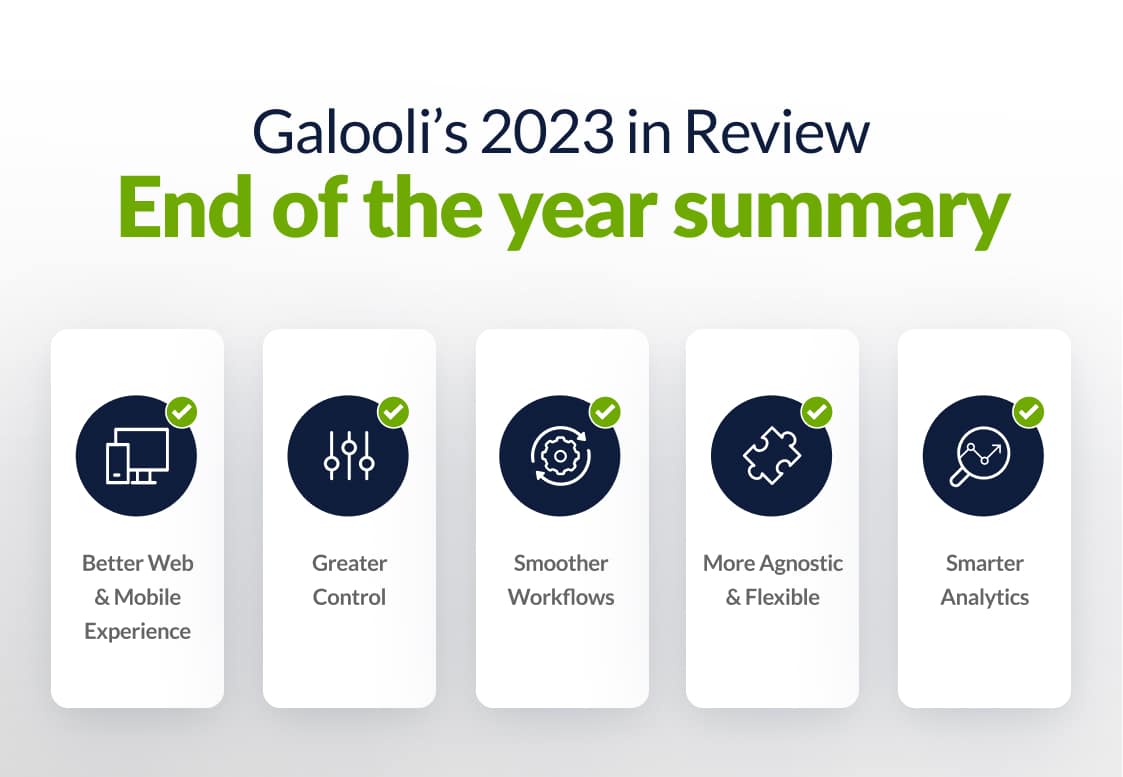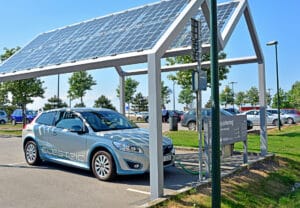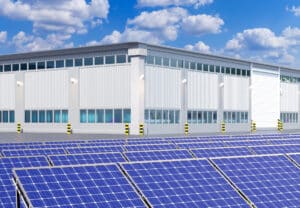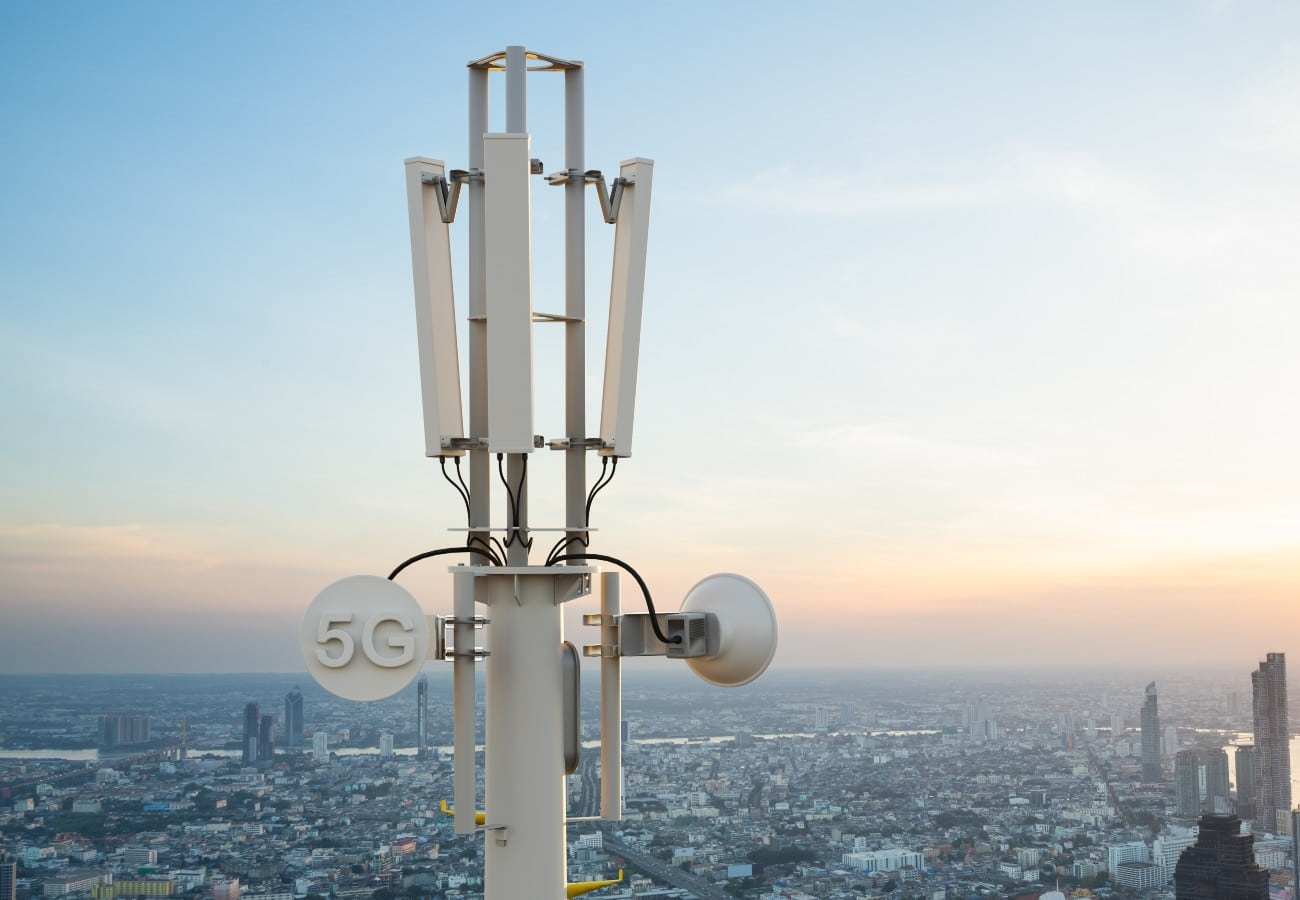
Virtual connectivity is upon us.
By 2027, Ericsson expects 5G connectivity to make up 62% of all mobile traffic in the world. Though you might not have experienced the information retrieval and access capabilities 5G provides locally, all it takes nowadays is a quick trip to your local sports stadium.
With all the benefits touted by network providers about 5G coverage, one critical aspect has been pushed aside – how are we powering these new network bands? Considering not everyone buys the latest phone, how will network providers efficiently power this new level of connectivity?
Before we dive in and answer that, let’s first look at what precisely these network generations are and how they’ve changed over the years.
3G, 4G, 5G, what’s with all the Gs?
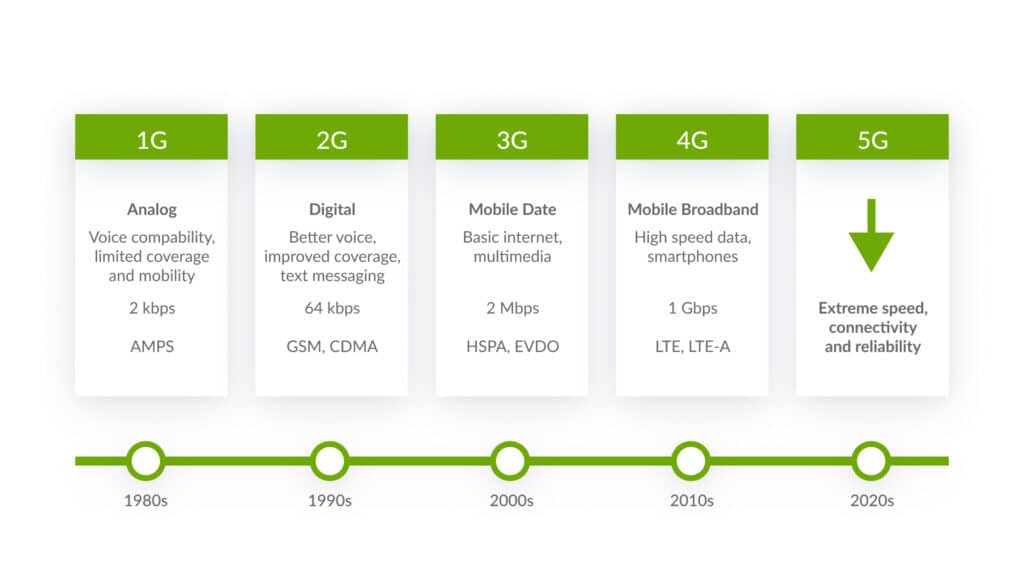
There is a great deal of talk about the various networks and how each “G” brings a faster, more secure, and stable experience. However, we rarely discuss the evolution of cellular networks, which started back in 1979 with the first generation network band, “1G.”
First Generation (1G) - AMPS
The first generation of cellular networks was simple, based on the Advanced Mobile Phone System (AMPS) technology. It was deployed first in Japan before expanding to the US and UK and was capable of only voice calls. 1G was hampered by frequent reliability and signal issues and limited protection against hackers and security capabilities.
Second Generation (2G) - GSM
It would take over a decade, until 1991, for the second network generation (2G) to launch. Based on the Global System for Mobile Communication (GSM), this version provided improved security and bandwidth, along with Short and Media Messaging Services (SMS/MMS). A jump in GSM technology provided “2.5G,” offering users email communications and web browsing during this period.
Third Generation (3G) - CDMA/UTMS
The Millennium brought with it the third generation “3G” and a dynamic shift in how end-users treated their mobile phones. 3G was highlighted by high-speed data, expanded bandwidth, and minimal information delay. Consumers’ focus shifted away from voice calls and towards social interactions, web browsing, media sharing, online games, and even streaming TV.
Fourth Generation (4G) - LTE
The fourth generation of network connectivity was the driving force behind popularizing smartphones. Using Long-Term Evolution (LTE) technology, this generation provided an exponential leap in streaming and transfer speeds up to 1Gbps. 4G brought with it the advent of mass mobile social media use, improved voice calling, media streaming, instant messaging, and the distinction as the first IP-based mobile network.
Fifth Generation (5G) - 3GPP
5G has been introduced in tandem with the mass adoption of the Internet of Things in consumer, commercial, and enterprise use cases. Integrating the successor to LTE, 3GPP, the fifth network generation is optimized for virtualization, cloud operations, and immensely bandwidth-heavy network operations.
Whereas 4G has been capped at 1Gbps, 5G aims to race jump forward to over 35 Gbps. This will reduce latency from 40ms to just 1ms and provide near-instantaneous information retrieval and robust integrated security capabilities.
So now that we’ve run through the network generations and how they changed mobile connectivity, let’s dive into the importance of optimizing energy use for 5G networks.
Why is optimizing energy efficiency so important for 5G networks?
As 5G networks become the global standard, and we begin to rely on the advantages they bring, there are a number of areas affected and relating to optimizing energy use and efficiency. Recent research found that base stations keep equipment running between 75-90% of the time despite the site being idle.
This leaves a great deal of unrealized potential in terms of optimizing site operations and energy use in particular. Especially since 5G technology and tower components are designed to provide the most efficient operations possible. Developing 5G infrastructure with sustainability and efficiency in mind is paramount to take advantage of 5G’s capabilities.
To fully illustrate the importance of efficient energy consumption for 5G, we’ve broken down a number of the critical aspects of the sector overall and the challenges it faces.
Networks and Users
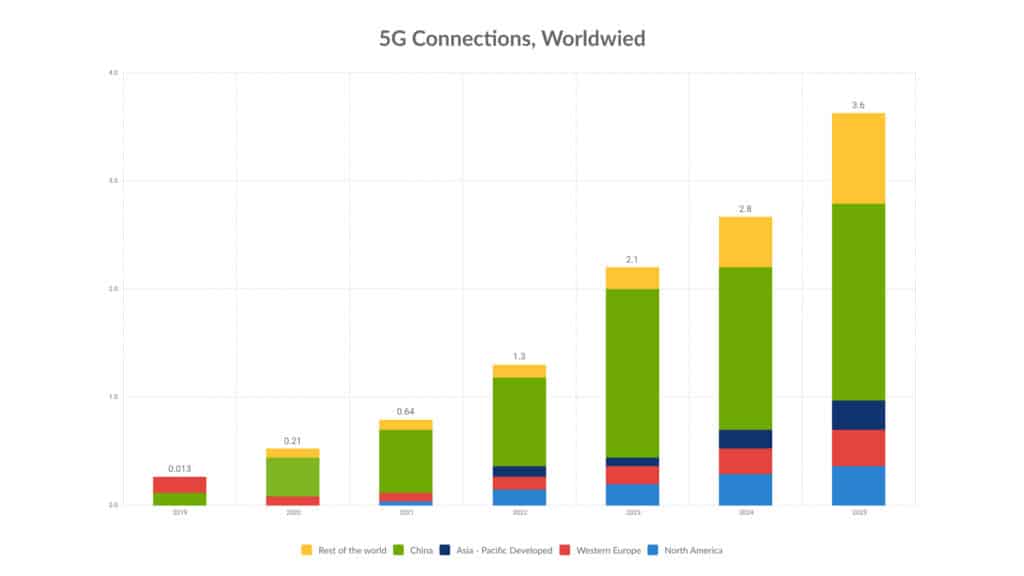
First and foremost, 5G coverage and users are growing exponentially. From its initial rollout by AT&T and Verizon in 2019, it is estimated that there will be 3.6 billion 5G users by 2025. By its very nature, 5G currently requires a much higher density of towers to maintain a stable and strong signal, and energy consumption is rising accordingly.
IoT
Tens of billions of IoT-connected devices are in the process of relying on this new 5G network connectivity to support their seamless operation, data collection, and real-time analytics. 127 IoT devices are connected every second, part of an expected 25 billion by 2025.
Those devices will need a massive amount of bandwidth and are expected to generate and transfer over 73 Zettabytes of data by the year 2025. This growth in traffic will require significant quantities of energy to maintain, in addition to vast networks of edge and centralized data centers.
However, only up to 20% of the energy used by sites annually is attributed to data transfer. The rest is lost in inefficient heating and cooling, equipment running idle, and poor usage of available energy assets. Using sensors to connect “dumb” machinery in tandem with a remote monitoring solution will provide the visibility to ensure this doesn’t continue.
Carbon Footprint and Sustainable Operations
The Information and Communications Technology (ICT) sectors are responsible for over 2% of the world’s total carbon emissions. As nations, service providers, and other multinational enterprises pledge to reduce their reliance on fossil fuels and their carbon footprint overall, 5G is a large part of those efforts.
The increased number of base stations required by 5G networks will be offset by the introduction of new, more efficient hardware like MiMO antennas. In addition, 5G technology is an enabler for a large variety of industry sectors by streamlining processes and operations like edge computing, virtualization, and AI-enhanced analytics.
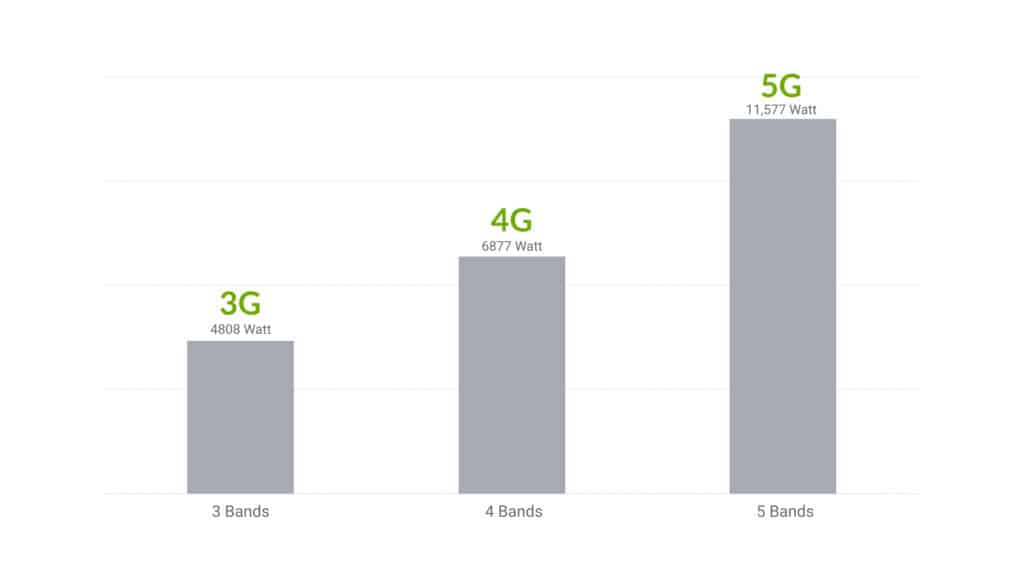
The challenge remains that most of the deployments of 5G networks rely on existing base stations that also provide service for 4G and other older network generations. When 5G is added to these base stations, the energy requirements jump by up to 70% to over 11.5Kw per site.
For the capabilities of 5G to truly be realized, it needs to be deployed standalone, and older network generations need to be slowly decommissioned. However, this is a long-term goal; there are entire regions that are entirely reliant on older network connectivity, in addition to a limited number of active mobile devices that support 5G.
Looking Forward
It isn’t all bad news for 5G, though. This network generation is 90% more efficient than 4G and has much greater energy elasticity to manage energy use during peak and off-peak times intelligently. As 5G technologies further develop, this will be able to help offset the increased density of base stations and take advantage of that increased efficiency.
However, that will be very difficult to achieve without an overarching 5G deployment that is run efficiently and with remote management solutions like Galooli’s. These IoT devices will also be integral to the effective, energy-efficient operation of these solutions, so they act synergistically to provide optimized performance to each other.
Start optimizing your 5G energy use with Galooli
Galooli provides site operators and other ICT organizations full visibility over your assets, no matter how many base stations are added or the location or existing hardware. This includes real-time remote monitoring and management capabilities regardless of your geographic location and lives alerts to any potential onsite problems.
As 5G connectivity begins to spread globally, the increased number and density of base stations will require even more effort on the part of operators and MSPs to keep them efficient. To prevent a continual rise in emissions, OPEX costs, and onsite visits, these stations, and the equipment need to be kept in sync.
Galooli’s solution cuts through the red tape and provides immediate access and remediation capabilities to fix the sites in your network as a batch. All without needing to be onsite at each, cutting down remediation time exponentially while saving operators time, money, and potential downtime.
Connect With Us
operational cost savings & efficiency?





















